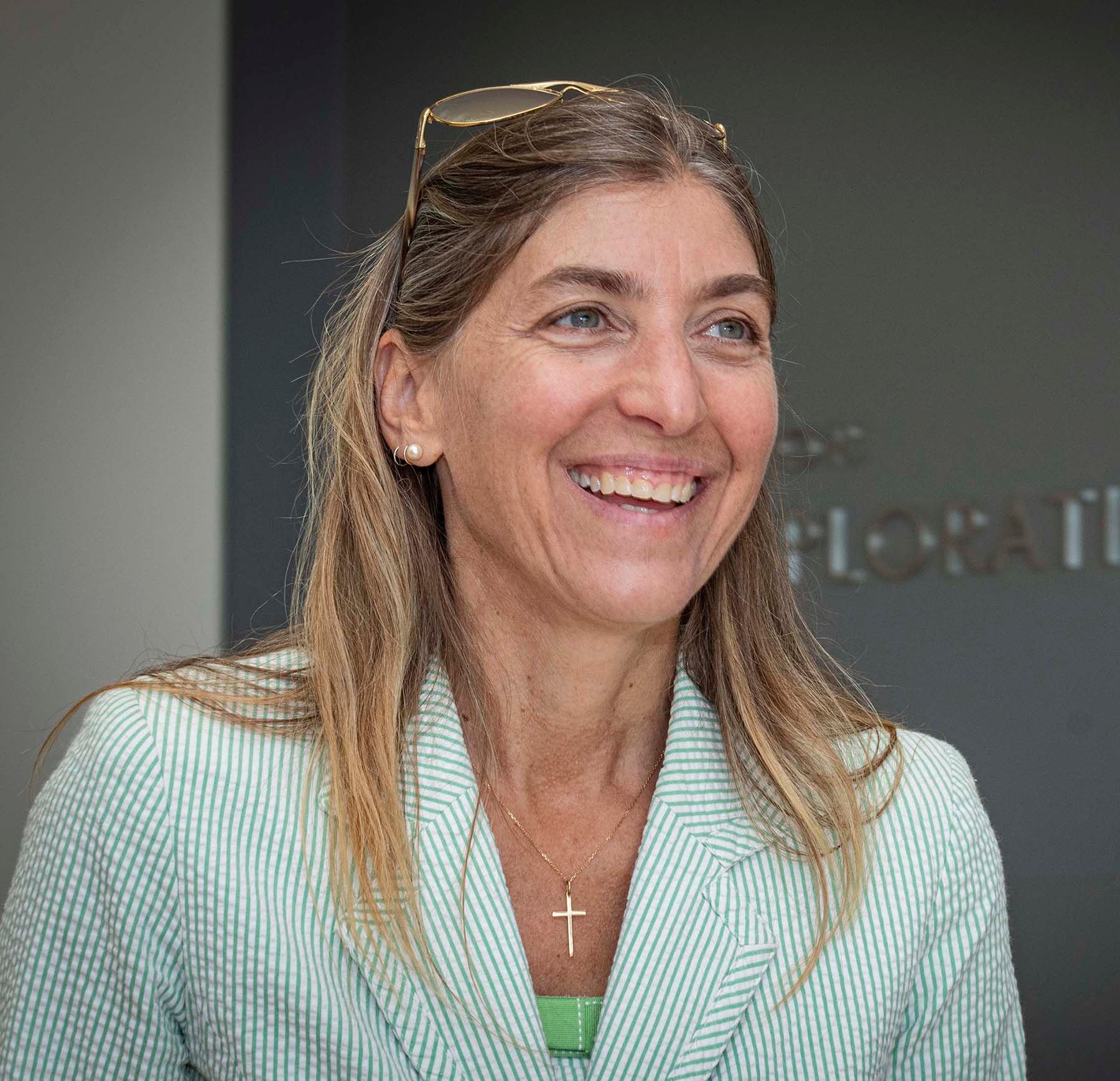KINGSTON, R.I – Sept. 23, 2022 – Those who know Paula Bontempi, dean of the University of Rhode Island’s Graduate School of Oceanography, would understand why she is excited about the Artemis moon shot, now tentatively set for Nov. 14.
A 2001 graduate of URI with a Ph.D. from GSO and a biological oceanographer for 25 years, she started as dean in August 2020 after a distinguished career at NASA. She most recently served as acting deputy director of the space agency’s Earth Science Division, part of the Science Mission Directorate of NASA Headquarters in Washington, D.C. Prior to that appointment, she spent more than 16 years as a physical scientist and program manager for ocean biology and biogeochemistry at NASA Headquarters.
She recently answered a few questions about the mission and the importance of ocean exploration for URI’s Department of Communications and Marketing.
Question: While you served at NASA, what were the projects and missions that most excited you?
Wow, there were a lot of them! I loved the SeaWiFS (Sea-viewing Wide Field-of-view Sensor) mission, the first dedicated ocean color mission. I was at NASA’s Goddard Space Flight Center as an intern from URI-GSO when the mission launched in 1997. Perseverance/Mars 2020 was amazing. I remember the instruments being chosen for the mission, including the autocopter. I love the Calipso mission, one of the first lidars (laser-based measuring systems) in space that was never built for ocean retrievals but gave us our first look at the oceans beyond the first optical depth. Dragonfly is ridiculously cool, heading to Titan for clues of the origin of life and the universe. Of course there is the beloved PACE mission, which will detail the plankton groups in the ocean from space and revolutionize our knowledge of our living planet and enable us to better protect its resources. And who cannot mention the James Webb Space Telescopenancy?
Question: You served as an earth scientist with a focus on ocean biology at NASA, but there still must have been great energy in your area at the start of and during space missions? Can you describe what that was like?
Absolutely. Every single time the agency would have a launch planned, or aeronautics would be planning a test flight, everyone gathered around a TV or computer screen to watch. Even when SpaceX or other commercial companies had a televised test we all watched. It is absolutely incredible to be at an institution where everyone, no matter their division or directorate, is behind a launch or mission. We shared success and failures, and learned together.
Question: What is the benefit of spending billions on the U.S. going back to the moon and eventually traveling to Mars? In other words, will we learn anything that can help us with our major environmental issues on Earth?
From an early age we all have a natural curiosity to explore. Artemis is the gateway to other planets within our solar system and potentially beyond. The challenges are great, but so are the opportunities. The physical and scientific challenges of getting to the Moon and beyond will bring new partnerships and facilitate new technologies and capabilities to enable human exploration. Returning to the surface of the Moon with new tools for sample collection and analyses may give us more insight into the history and origin of Earth and all of the bodies and planets within our solar system. Perhaps this will also include insight into Earth’s climate and mineral discoveries for green infrastructure and energy. I’m not an expert in planetary science, but Artemis could certainly lead to new strategic and commercial or economic opportunities based on the discoveries made with our international partners. Undoubtedly a mission like this will inspire the next generation of explorers.
Question: Most of the ocean remains to be explored. Shouldn’t the U.S. focus on the ocean and its importance in climate change and the various threats to its health and its inhabitants, such as increasing ocean temperatures; pollution, including micro-plastics and PFAS; and sea-level rise?
The oceans occupy 99% of the habitable living space on the Earth. Much of this space remains to be explored. Deep ocean waters and the seafloor are incredibly hard to reach, let alone sample, but this challenge provides an opportunity for breaking new frontiers in technology development, including sensors, platforms, robots, and instruments, to communications and computing. Exploration leads to discovery, and this leads to research. The New York Times ran two fascinating ocean stories in the last few weeks: a cover story about deep sea exploration and the nodules on the seafloor that are of tremendous value for their rare metals, key to green energy infrastructure, to the large number of people building their own submarines to explore the deep ocean.
Federal to local governments invest billions of dollars in disciplinary and interdisciplinary Earth system research each year to try to unlock the mysteries of our planet and its components, and understand its function – as the Earth is changing. This information is critical to improve predictive models for Earth’s climate and weather patterns, ensure ocean ecosystems are protected, and sustainably manage Earth’s resources to ensure things like safe drinking water for all. Climate change (e.g., SLR) and contaminants such as PFAS, plastics, etc. are shared global challenges and countries must work together for innovative solutions to those challenges. We must also improve at telling our story to the public, as we all play a role in climate change as well as its solutions.
Dean Bontempi’s Education
Ph.D., Oceanography, University of Rhode Island, Graduate School of Oceanography, 2001
M.S., Oceanography, Texas A&M University, 1995
B.S., Biology, Boston College, 1992

